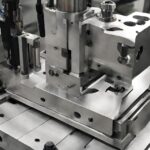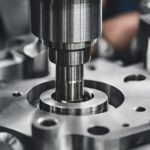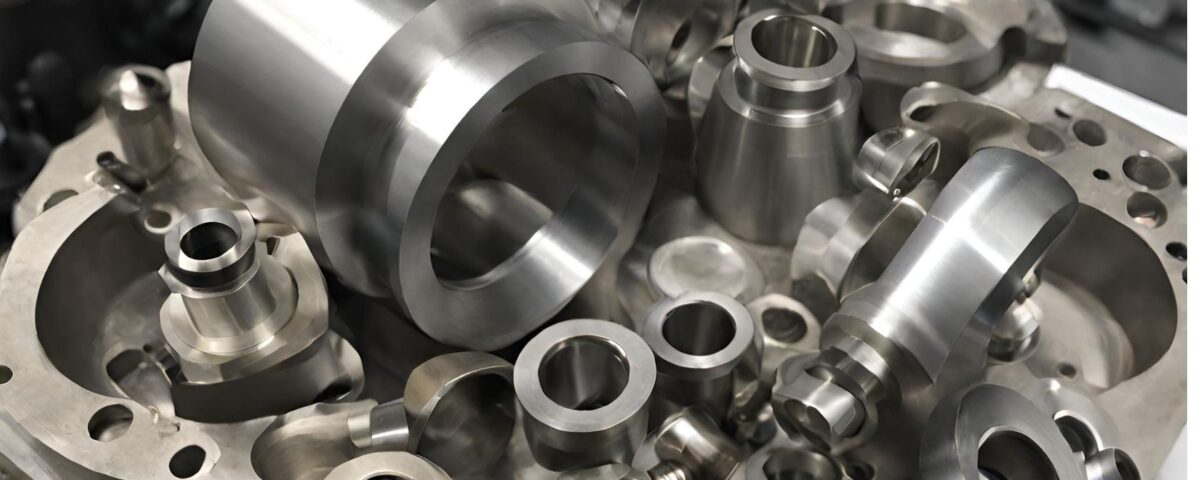
The Importance of the First Inspection in CNC Parts Quality Inspection
17 April 2024
The Art of Precision Machining: Mastering Perfection in Every Cut
19 April 2024Welcome to the fascinating world of precision machined components, where art meets science to create perfection. In this article, we delve into the intricate craftsmanship of these components and explore the meticulous process behind their creation. From aerospace to medical devices, precision machined components play a vital role in various industries, where precision and reliability are paramount.
Crafted with utmost precision and attention to detail, these components are the backbone of countless mechanical systems. From gears and valves to pistons and bearings, every component is manufactured to exact specifications, ensuring seamless functionality and optimal performance.
The art of precision machining lies in the hands of skilled craftsmen who bring these components to life. With their expertise and mastery, they transform raw materials into intricately designed parts, using state-of-the-art machinery and cutting-edge technology. By combining creativity and technical expertise, they achieve precision levels that were once thought impossible.
As we explore the science behind precision machined components, we discover the advanced engineering principles and techniques involved. From computer-aided design (CAD) and computer numerical control (CNC) machining to rigorous quality control measures, every step is meticulously planned and executed to perfection.
Join us on this fascinating journey through the art and science of precision machined components, where unparalleled craftsmanship meets cutting-edge technology to create the epitome of mechanical perfection.
Importance of precision in manufacturing
Precision is crucial in manufacturing as it ensures that every component functions seamlessly and fits perfectly within a larger system. Whether it's a small gear in a watch or a critical part in a spacecraft, the accuracy of precision machined components can make all the difference between success and failure. The slightest deviation from the required specifications can lead to performance issues, safety concerns, and costly downtime.
Types of precision machining processes
Precision machining involves a range of processes, each tailored to meet specific requirements. One of the most common techniques is CNC machining, which stands for Computer Numerical Control. This method uses computer-controlled machines to accurately shape and cut materials with high precision. CNC machining offers flexibility, speed, and repeatability, making it a popular choice for manufacturing complex components.
Another technique is electrical discharge machining (EDM), which uses electrical sparks to erode the material and create intricate shapes. This process is ideal for working with hard materials such as titanium and hardened steel. Additionally, there are processes like grinding, milling, and turning, each suited for different types of materials and component designs.

Materials commonly used for precision machined components
Precision machined components can be made from a wide range of materials, depending on the specific application. Common materials include stainless steel, aluminum, brass, and various types of plastics. These materials are chosen for their durability, strength, and resistance to wear and corrosion. In some cases, exotic materials such as titanium or Inconel are used for their exceptional properties, such as high temperature resistance or lightweight characteristics.
Advantages of precision machined components
Precision machined components offer several advantages over their counterparts. Firstly, their accuracy and tight tolerances ensure that they fit perfectly within a system, resulting in optimal performance. Additionally, their high-quality finish reduces friction, improving efficiency and extending the lifespan of the components.
Precision machining also allows for complex designs and intricate features that cannot be achieved through traditional methods. This opens up new possibilities for engineers and designers to create innovative products with enhanced functionality. Moreover, precision machining enables cost-effective production, with the ability to manufacture large volumes of components with consistent quality.
Challenges in precision machining
While precision machining offers numerous benefits, it is not without its challenges. One of the main challenges is the need for highly skilled operators who can program and operate the advanced machinery used in precision machining. These operators must possess a deep understanding of the materials, tools, and machining processes to achieve the desired results.
Another challenge is the selection of the appropriate machining technique for a specific component. Different materials and designs require different approaches, and a wrong choice can lead to subpar results or even damage to the component. Additionally, maintaining tight tolerances and ensuring dimensional accuracy throughout the manufacturing process can be challenging, especially for large or complex components.
Quality control in precision machining
Quality control is a critical aspect of precision machining to ensure that every component meets the required specifications. Inspection and measurement techniques, such as coordinate measuring machines (CMM) and optical comparators, are used to verify dimensional accuracy and check for any defects.
In addition to post-production inspections, quality control is also integrated into the manufacturing process itself. Statistical process control (SPC) techniques are employed to monitor and control key process parameters, ensuring consistency and minimizing variations. This proactive approach helps identify any deviations early on, allowing for corrective actions to be taken before any defective components are produced.

Choosing the right precision machining service provider
When it comes to precision machining, choosing the right service provider is crucial. Look for a company with a proven track record, extensive experience, and a commitment to quality. They should have state-of-the-art machinery and advanced technology to ensure accurate and efficient production.
Furthermore, a reliable precision machining service provider should have a strong quality control system in place. They should be able to provide certifications and documentation to demonstrate compliance with industry standards. Additionally, consider their ability to handle complex designs, work with a variety of materials, and meet strict deadlines.
Applications of precision machined components in various industries
Precision machined components find applications in a wide range of industries, where reliability and accuracy are paramount. In the aerospace industry, these components are used in aircraft engines, landing gear systems, and avionics. The medical industry relies on precision machined components for surgical instruments, implantable devices, and diagnostic equipment.
Other industries that benefit from precision machined components include automotive, electronics, defense, and oil and gas. From high-performance racing engines to intricate electronic devices, these components play a vital role in ensuring the smooth operation of various mechanical systems.
Conclusion: The future of precision machining
As technology continues to advance, the future of precision machining looks promising. New materials, such as composites and advanced alloys, are being developed, pushing the boundaries of what is possible. Additionally, advancements in automation and robotics are streamlining the manufacturing process, improving efficiency, and reducing costs.
Furthermore, the demand for precision machined components will only increase as industries strive for higher performance, reliability, and miniaturization. The ability to produce intricate and accurate components will continue to be a driving force behind innovation and progress.
In conclusion, precision machined components are the result of a harmonious blend of art and science. Skilled craftsmen utilize their creativity and technical expertise to create components that meet the most demanding specifications. Coupled with advanced machinery and rigorous quality control measures, precision machining ensures the production of components that are the epitome of mechanical perfection. So, the next time you see a finely crafted gear or a precisely machined valve, appreciate the art and science behind it, for it is a testament to human ingenuity and the pursuit of perfection.




